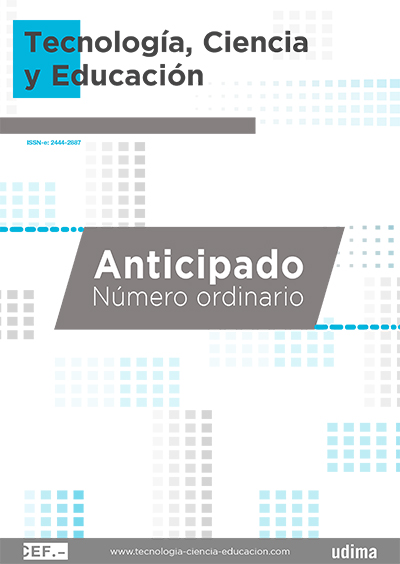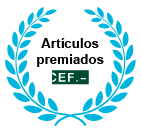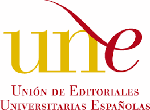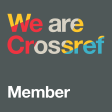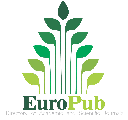Software for solving and simulating physical problems about collisions in one and two dimensions for educational and interactive use purposes
DOI:
https://doi.org/10.51302/tce.2025.21499Keywords:
collisions, simulator, physics, teaching, Unity, learning, ScrumAbstract
The study of physics presents challenges for students and teachers (men and women). It involves understanding and predicting natural behavior through laws associated with experimentation. Simulations provide opportunities for hands-on learning and exploration of abstract concepts by allowing the creation of ideal situations, manipulating variables, and observing their impact on concrete phenomena. The purpose of this work is to create a virtual physics laboratory on particle collisions to help students in the first courses of university Physics to understand these concepts through visual representations and the associated mathematical process. The feasibility and effectiveness of using a video game engine for the rapid development of a simulator that accurately represents different types of collisions is evaluated, taking advantage of the fact that the use of collisions is a fundamental part of these.
The project is applied research, oriented to solve practical problems through the creation of specific software. It started with a bibliographic review, considering pedagogical and technical aspects, followed by the development of the software using Scrum to create a minimum viable product. The Unity game engine was used. The simulator allows the generation of customized problems and consists of four modules that show the behavior of the particles before, during and after the collision, graphically, mathematically and vectorially.
Downloads
References
Aguas, L., Recalde, H., Toasa, R. y Salazar, E. (2023). Design of a video game applying a layered architecture based on the unity framework. En Á. Rocha, C. Ferrás y W. Ibarra (Eds.), Information Technology and Systems (pp. 535-550). Springer International Publishing. https://doi.org/10.1007/978-3-031-33261-6_46
Alonso, S., Kalinowski, M., Ferreira, B., Barbosa, S. D. J. y Lopes, H. (2023). A systematic mapping study and practitioner insights on the use of software engineering practices to develop MVPs. Information and Software Technology, 156. https://doi.org/10.1016/j.infsof.2022.107144
Barragán Suescún, F. (2020). Simulaciones interactivas: nuevas herramientas en el aprendizaje contextualizado de la Física universitaria. Revista Ciencias de la Educación, 30(56), 541-568. http://servicio.bc.uc.edu.ve/educacion/revista/56/art02.pdf
Boettcher, K. y Behr, A. (2021). Using virtual reality for teaching the derivation of conservation laws in fluid mechanics. International Journal of Engineering Pedagogy, 11(4), 42-57. https://doi.org/10.3991/ijep.v11i4.20155
Carangui Cárdenas, L. R., Cajamarca Criollo, O. A. y Mantilla Crespo, X. A. (2017). Impacto del uso de simuladores en la enseñanza de la administración financiera. Innovación Educativa (México, DF), 17(75), 103-122. https://www.redalyc.org/pdf/1794/179454112006.pdf
Chandra, A. Y., Prasetyaningrum, P. T., Suria, O., Santosa, P. I. y Nugroho, L. E. (2021). Virtual reality mobile application development with Scrum framework as a new media in learning english. International Journal of Interactive Mobile Technologies, 15(8), 31-49. https://doi.org/10.3991/ijim.v15i08.19923
Chen, J. y Price, E. (2022). Game Development with Unity for .NET Developers: The Ultimate Guide to Creating Games with Unity and Microsoft Game Stack. Packt Publishing Ltd.
Chover, M., Marín, C., Rebollo, C. y Remolar, I. (2020). A game engine designed to simplify 2D video game development. Multimedia Tools & Applications, 79(17-18), 12.307-12.328. https://doi.org/10.1007/s11042-019-08433-z
Ciekanowska, A., Kiszczak-Gli´nski, A. y Dziedzic, K. (2021). Comparative analysis of Unity and unreal engine efficiency in creating virtual exhibitions of 3D scanned models. Journal of Computer Sciences Institute, 20, 247-253. https://doi.org/10.35784/jcsi.2698
Elizondo Treviño, M.ª S. (2013). Dificultades en el proceso enseñanza aprendizaje de la Física. Presencia Universitaria, Año 3(5), 70-77. http://eprints.uanl.mx/3368/1/Dificultades_en_el_proceso_ense%C3%B1anza_aprendizaje_de_la_F%C3%ADsica.pdf
El-Wajeh, Y. A. M., Hatton, P. V. y Lee, N. J. (2022). Unreal Engine 5 and immersive surgical training: translating advances in gaming technology into extended-reality surgical simulation training programmes. British Journal of Surgery, 109(5), 470-471. https://doi.org/10.1093/bjs/znac015
Epic Games. (2024). Unreal Engine 5.3 Documentation. https://docs.unrealengine.com/5.3/en-US/
González-González, C. S., Toledo-Delgado, P. y Muñoz-Cruz, V. (2015). Agile human centered methodologies to develop educational software. DYNA, 82(193), 187-194. https://doi.org/10.15446/dyna.v82n193.53495
Hernández-Paez, A., Domínguez Falcón, J. A. y Pi Cruz, A. A. (2018). Arquitectura de software para el desarrollo de videojuegos sobre el motor de juego Unity 3D. Revista de I+D Tecnológico, 14(1), 54-65. https://doi.org/10.33412/idt.v14.1.1803
Hernández Sampieri, R., Fernández Collado, C. y Baptista Lucio, P. (2014). Metodología de la investigación (6.ª ed.). McGraw-Hill.
Isela Aguilar Vargas, L. R. y Otuyemi Rondero, E. O. (2020). Análisis documental: importancia de los entornos virtuales en los procesos educativos en el nivel superior. Tecnología, Ciencia y Educación, 17, 57-77. https://doi.org/10.51302/tce.2020.485
Jiménez-Torres, V. H., Tello-Borja, W. y Rios-Patiño, J. I. (2014). Lenguajes de patrones de arquitectura de software: una aproximación al estado del arte. Revista Scientia et Technica, 19, 371-376. https://revistas.utp.edu.co/index.php/revistaciencia/article/view/8595/5869
Kortemeyer, G. (2023). Writing virtual reality teaching resources. The Physics Teacher, 61(2), 107-109. https://doi.org/10.1119/5.0067963
López-Mera, D. D., Archila-Gutiérrez, A. C., Hernández-Montoya, B. C., Suárez-Chávez, S. E. y Pérez-Rojas, E. H. (2021). Modelo para la creación del juego de realidad alternativa «El Plan de Gauss»: matemáticas, relatos y juegos en instituciones de educación superior. Tecnología, Ciencia y Educación, 133-154. https://doi.org/10.51302/tce.2021.529
Makamu, G. y Ramnarain, U. (2022). Physical sciences teachers’ enactment of simulations in 5E inquiry-based science teaching. Education Sciences, 12(12), Article 12. https://doi.org/10.3390/educsci12120864
Monfort Salvador, V. y E-Martín, Y. (2022). CoopDev project: learning developments through different methodologies and strategies. Conference Proceedings International Scientific & Professional Conference Contemporary Issues in Economy & Technology, CIET (pp. 848-859).
O3DE. (2024). https://o3de.org/
Otto, A. I., Bakieva Karimova, M. y García Laborda, J. (2023). Evaluación formativa a través de herramientas informáticas: nuevos enfoques y perspectivas. Tecnología, Ciencia y Educación, 26, 7-8. https://www.tecnologia-ciencia-educacion.com/index.php/TCE/article/view/19285
Pérez-Higuera, G. D., Niño-Vega, J. A. y Fernández-Morales, F. H. (2020). Estrategia pedagógica basada en simuladores para potenciar las competencias de solución de problemas de física. Aibi. Revista de Investigación, Administración e Ingeniería, 8(3) 17-23. https://doi.org/10.15649/2346030X.863
Prado Martínez, W. (2008). Simulación computacional para la enseñanza de la física. Entre Ciencia e Ingeniería, 3, 111-124. https://revistas.ucp.edu.co/index.php/entrecienciaeingenieria/article/view/826
Rodrigues de Oliveira, E., Cabral Ribeiro, P. C., Picinini Méxas, M. y Barbará de Oliviera, S. (2023). Scrum method assessment in Federal Universities in Brazil: multiple case studies. Brazilian Journal of Operations & Production Management, 20(1), 1-14. https://doi.org/10.14488/BJOPM.1496.2023
Salimzyanova, E. Sh. (2022). Agile in digital didactics in the era of the VUCA world in education. ARPHA Proceedings, 5, 1.417-1.432. https://zenodo.org/records/6132816
Schwaber, K. y Sutherland, J. (2020). La guía Scrum: la guía definitiva de Scrum: las reglas del juego. https://scrumguides.org/docs/scrumguide/v2020/2020-Scrum-Guide-Spanish-European.pdf
Scott, E. y Campo, M. (2023). An adaptive 3D virtual learning environment for training software developers in Scrum. Interactive Learning Environments, 31(8), 5.200-5.218. https://doi.org/10.1080/10494820.2021.1999985
Torres-Blasco, C. y Pérez-Garcias, A. (2023). Indicadores de agencia en experiencias educativas Agile: una revisión panorámica. Píxel-Bit. Revista de Medios y Educacion, 68, 183-215. https://doi.org/10.12795/pixelbit.98457
Umbreen, J., Mirza, M. Z., Ahmad, Y. y Naseem, A. (2022). Assessing the role of minimum viable products in digital startups. 2022 IEEE International Conference on Industrial Engineering and Engineering Management (IEEM) (pp. 1.073-1.077). https://doi.org/10.1109/IEEM55944.2022.9989653
Unity Technologies. (2019). Unity Documentation. Unity User Manual. Física. https://docs.unity3d.com/es/2018.4/Manual/PhysicsSection.html
United Technologies. (2025). Unity Documentation-Scripting API: ForceMode.Impulse. https://docs.unity3d.com/ScriptReference/ForceMode.Impulse.html
Unity Technologies. (2025). Unity Documentation. Docs and Guides to Work with the Unity Ecosystem. https://docs.unity.com/
Wiesing, M., Fink, G. R. y Weidner, R. (2020). Accuracy and precision of stimulus timing and reaction times with Unreal Engine and SteamVR. PLOS ONE, 15(4), 1-24. https://doi.org/10.1371/journal.pone.0231152
Downloads
Published
How to Cite
Issue
Section
License
Copyright (c) 2025 María del Pilar Cuenca Marcano, Salomón Mizrachi Cohén, Gabriela Banezca Luces, José Villegas Vera

This work is licensed under a Creative Commons Attribution-NonCommercial-NoDerivatives 4.0 International License.

